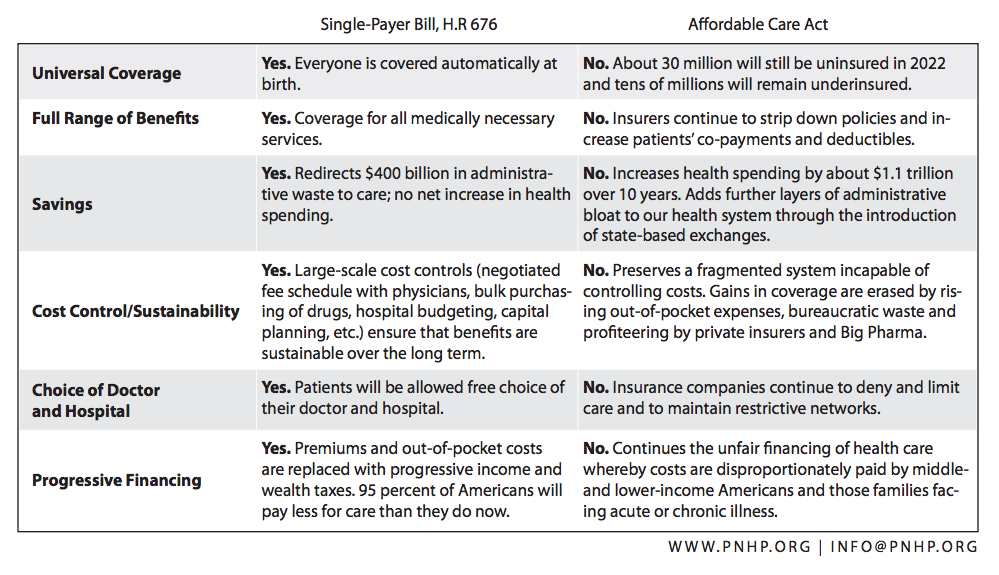See how both scenarios additional divorce the patient from choice and from the doctor or other care entities?Free market principles have not failed health care, however healthcare hasn't been allowed to naturally make use of the totally free market in nearly a century. (Not too surprisingly, due to federal and state federal government laws and policies, many elements of the healthcare environment have actually been skewed, cancelled or downright banned.
How can an individual pick for themselves if government and 3rd parties are paying? They can't. There's the rub for all who advocate interacted socially medicine, federal government single-payer, company based health insurance, or anything but the first-party transaction of the client choosing and paying the caretaker directly. So "healthcare"- all the industries, interests, services and products that make up the ecosystem-must be permitted by government to welcome the performance and fairness of the free enterprise.
The free market reacts to needs and wants by offering these products and services with outstanding quality, performance and different rate options. Visit the website Quality increases and price boils down through free enterprise competitors, not government order. All patients, governments, and all of, so-called, "healthcare," would gain from direct free enterprise competition.
So, let's not use the word "health care," as it is far too broad. People keep getting it puzzled with insurance coverage "coverage." There's health insurance, which ought to be called sickness insurance coverage. And healthcare, which is what doctors do. People need to be responsible to look after their own health with their own unique value systems.
We count on advertising to help money our award-winning journalism. We prompt you to turn off your advertisement blocker for Continue reading The Telegraph website so that you can continue to access our quality content in the future. Thank you for your assistance.
An Unbiased View of A Health Care Professional Should Question The Use Of Metoclopramide For A Patient Who Is Taking
HEALTH SYSTEM: all the activities whose main function is to promote, bring back or preserve health (The World Health Report 2000 Health systems: improving efficiency) MEANINGS FROM THE WHO GLOSSARY OF TERMS (available at: http://www. wpro.who. int/chips/chip04/ meanings. htm). A health center that offers a variety of different services for clients of various age groups and with varying disease conditions.

A hospital at the very first recommendation level that is responsible for a district or a specified geographical location containing a specified population and governed by a politico-administrative organization such as a district health management team. The role of district health centers in main healthcare has actually been broadened beyond being dominantly curative and rehabilitative to include advertising, preventive, and instructional functions as part of a main health-care technique.
A centre that provides services which are generally the very first point of contact with a health specialist. They include services supplied by general practitioners, dental professionals, neighborhood nurses, pharmacists and midwives, amongst others. All graduates of any faculty or school of medicine, actually operating in the country in any medical field (practice, teaching, administration, research, lab, etc.).
The person may or may not have previous nursing education. All individuals who have finished a programme of fundamental nursing education and are qualified and registered or licensed to provide accountable and competent service for the promotion of Check out here health, avoidance of illness, the care of the ill, and rehabilitation, and are really working in the nation (why doesn't the us have universal health care).
All graduates of any professors or school of dentistry, odontology or stomatology, in fact working in the country in any dental field. All employees who respond to the national meaning of health-care companies and are neither physicians/doctors, midwives, nurses, pharmacists, or dental practitioners. Inpatient. A person who is officially admitted to a health-care facility and who is discharged after one or more days.
How Many Health Care Workers Have Died From Covid - An Overview
A person who goes to a health-care facility for an assessment, and who leaves the center within three hours of the start of consultation. An outpatient is not officially confessed to the facility. MEANINGS FROM THE EUROPEAN OBSERVATORY ON HEALTH SYSTEMS AND POLICIES (available at http://www. euro.who. int/observatory/Glossary/ TopPage?phrase =D) Ambulatory care. All types of health services supplied to clients who are not confined to an institutional bed as inpatients throughout the time services are rendered (USAID, 1999).
Ambulatory care services are offered in many settings ranging from physicians' workplaces to freestanding ambulatory surgical facilities or heart catheterization centres. In some applications, the term does not include emergency situation services supplied in tertiary medical facilities (USAID, 1999). Daycare. Medical and paramedical services delivered to patients who are officially admitted for medical diagnosis, treatment or other kinds of healthcare with the intention of discharging the client the very same day.
Long-lasting care encompasses a broad series of aid with everyday activities that chronically disabled people need for an extended time period. Long-lasting care is mainly worried about keeping or improving the ability of senior people with disabilities to operate as separately as possible for as long as possible; it also includes social and environmental needs and is for that reason broader than the medical model that controls severe care; it is mainly low-tech, although it has ended up being more complicated as senior individuals with complicated medical needs are discharged to, or remain in, conventional long-term care settings, including their own houses; services and housing are both important to the development of long-lasting care policy and systems.

Social care. Services related to long-term inpatient care plus neighborhood care services, such as daycare centres and social services for the chronically ill, the elderly and other groups with unique needs such as the mentally ill, mentally handicapped, and the physically handicapped. The borderline between healthcare and social care differs from country to country, particularly relating to social services which involve a significant, however not dominant, health-care component such as, for example, long-term care for dependent older individuals.
To make sure healthcare coverage for everybody in the United States through a structure of thorough and longitudinal medical care. The intent of this policy document is to provide the American Academy of Family Physicians (AAFP) and its Board of Directors the required advocacy flexibility to consider all options that may come before federal and state governments and the American individuals in working to attain the objective of health care protection for all an objective based upon AAFP policy which acknowledges that health is a fundamental human right for every person which the right to health includes universal access to timely, appropriate and cost effective health care of proper quality.
The Buzz on Which Of The Following Health Professionals Is Least Likely To Be A Primary Health Care Provider?
Healthcare costs continue to increase at an unsustainable rate and quality is far from perfect. i, ii Over the previous twenty years, policies executed through the Kid's Medical insurance Program (CHIP) and the Client Protection and Affordable Care Act (ACA) have extended access to affordable healthcare protection to millions of formerly uninsured, non-Medicare eligible adults and children.
8% under the implementation of these policies. iii The best gains in coverage have actually happened amongst our most vulnerable populations and young adults. Nevertheless, the rollback of some provisions of these policies has actually increased the percentage of those uninsured to 15. 5%, iv near what it was one decade ago when our uninsured rate was nearing 17%, with almost 50 million people uninsured.